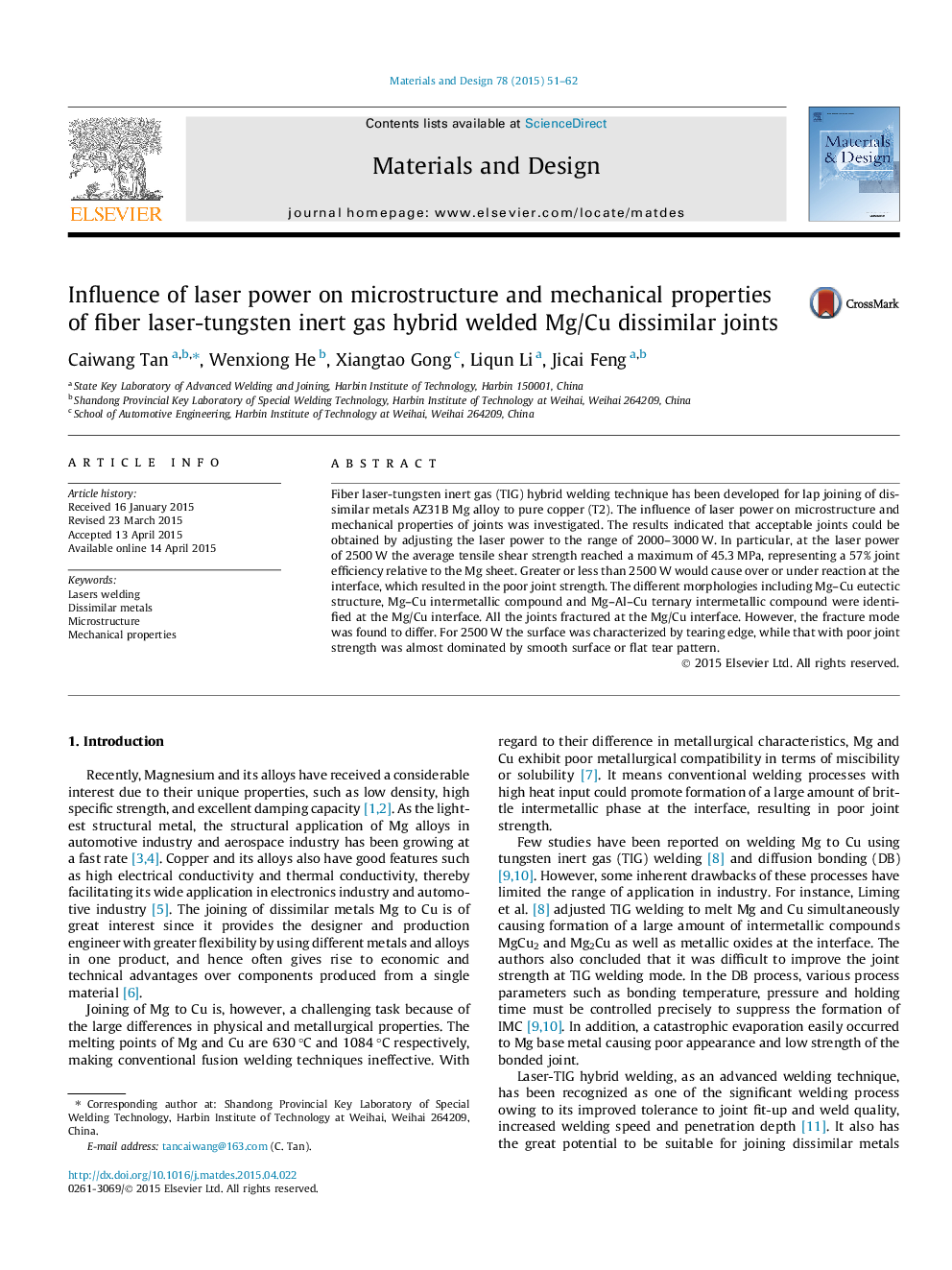| Article ID | Journal | Published Year | Pages | File Type |
|---|---|---|---|---|
| 828568 | Materials & Design (1980-2015) | 2015 | 12 Pages |
•Mg and Cu were joined successfully by laser-TIG hybrid welding process.•Effect of laser power on welded-brazed joints was investigated.•Different newly formed compounds were identified at the Mg/Cu interface.•Al from Mg base metal played an important role in Mg–Al–Cu ternary compound.•Mg–Cu eutectic structure did little harm to mechanical properties.
Fiber laser-tungsten inert gas (TIG) hybrid welding technique has been developed for lap joining of dissimilar metals AZ31B Mg alloy to pure copper (T2). The influence of laser power on microstructure and mechanical properties of joints was investigated. The results indicated that acceptable joints could be obtained by adjusting the laser power to the range of 2000–3000 W. In particular, at the laser power of 2500 W the average tensile shear strength reached a maximum of 45.3 MPa, representing a 57% joint efficiency relative to the Mg sheet. Greater or less than 2500 W would cause over or under reaction at the interface, which resulted in the poor joint strength. The different morphologies including Mg–Cu eutectic structure, Mg–Cu intermetallic compound and Mg–Al–Cu ternary intermetallic compound were identified at the Mg/Cu interface. All the joints fractured at the Mg/Cu interface. However, the fracture mode was found to differ. For 2500 W the surface was characterized by tearing edge, while that with poor joint strength was almost dominated by smooth surface or flat tear pattern.
Graphical abstractFigure optionsDownload full-size imageDownload as PowerPoint slide
